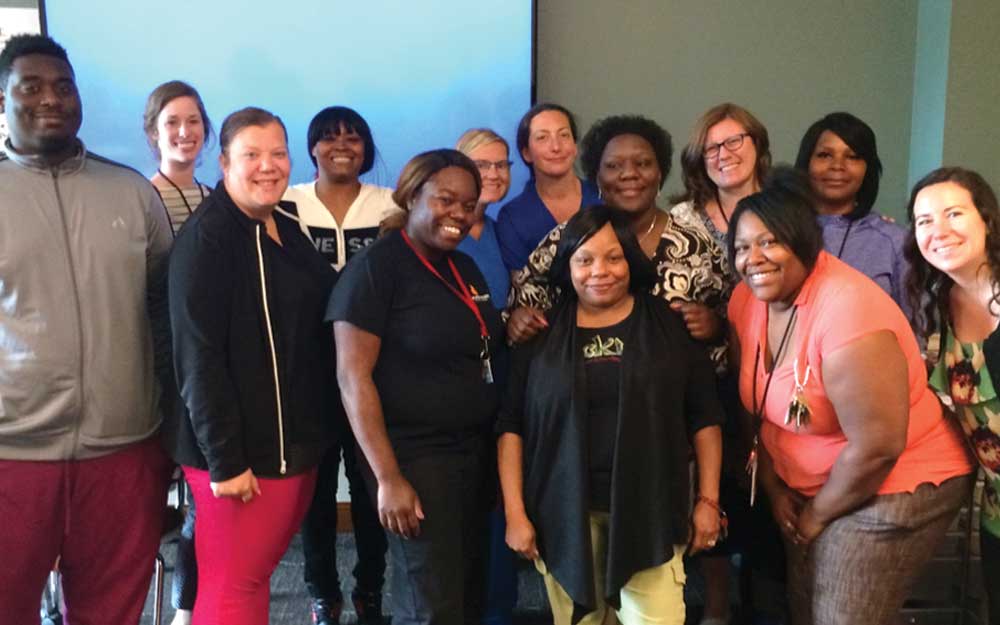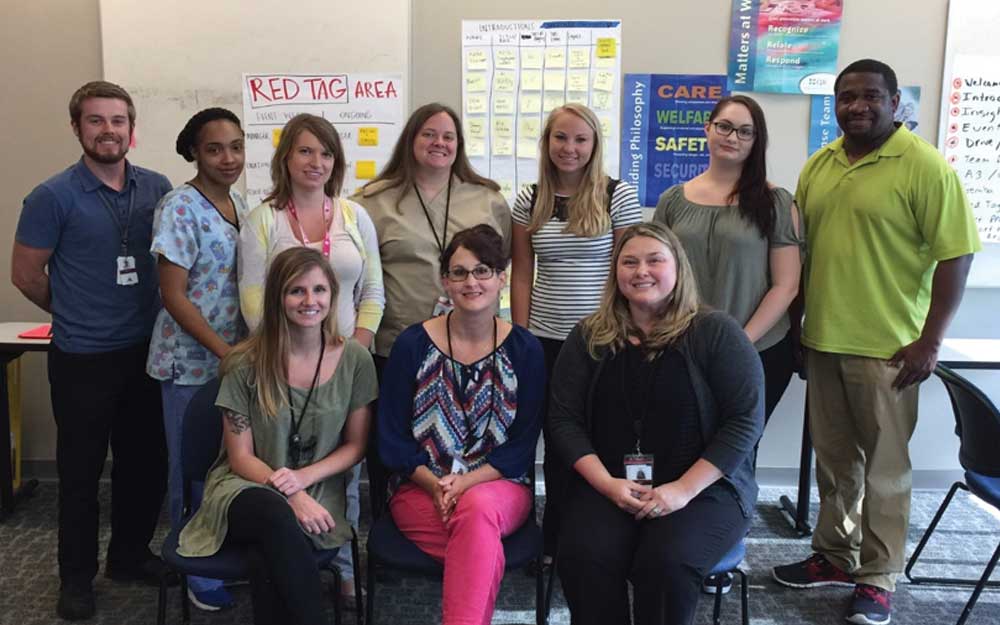
Rogers Improvement System teams tackle clutter and helping patients get the right care after inpatient stays
09/12/17 07:34:pm6S is a process for making sure you have what you need, where you need it, when you need it. Two Rapid Improvement Events recently tackled nurses’ stations, hallways and storage areas in the West Allis Child Unit and the Brown Deer Child/Adolescent Unit.
Anna Meremable, RIS deployment leader, explains why 6S is so important: “It can seem like just reorganizing or spring cleaning, but it is truly a key part of creating a process that flows well. For instance, you could have the nicest house with beautiful cabinets, but if your cooking pots are in the bathroom and your shampoo is stored above your stove…it just wouldn’t work! So why don’t we think of the flow of our work when we organize our space?”
The two teams tackled areas where good workflow means good patient care. They sorted, scrubbed, and moved things around so that everything is where it is needed. Then they created easy visuals so that even an agency nurse walking onto the unit can tell where things should be.
According to Kent Franklin, Rogers Improvement System director, an important benefit of 6S is it sets a standard and makes problems visible at a glance which drives further improvements and problem solving. “Is it easier to see if your car is leaking oil if the floor of your garage is dirty and oil covered or if it is spotlessly clean? Obviously, a drop of oil on a spotless floor is clearly visible and calls attention to a possible problem. The same is true in our patient care areas. By having the supplies you need, where you needed them, when you need them, no more, no less… we can better see problems that are impacting patient care and correct them.”
The results of the teams’ hard work can be seen in the before and after pictures.
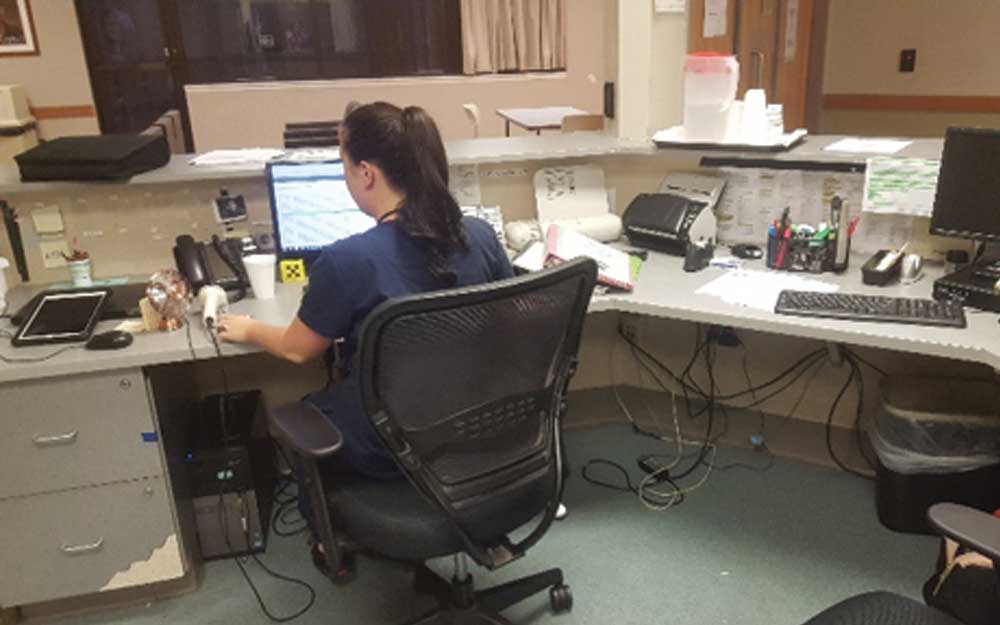 |
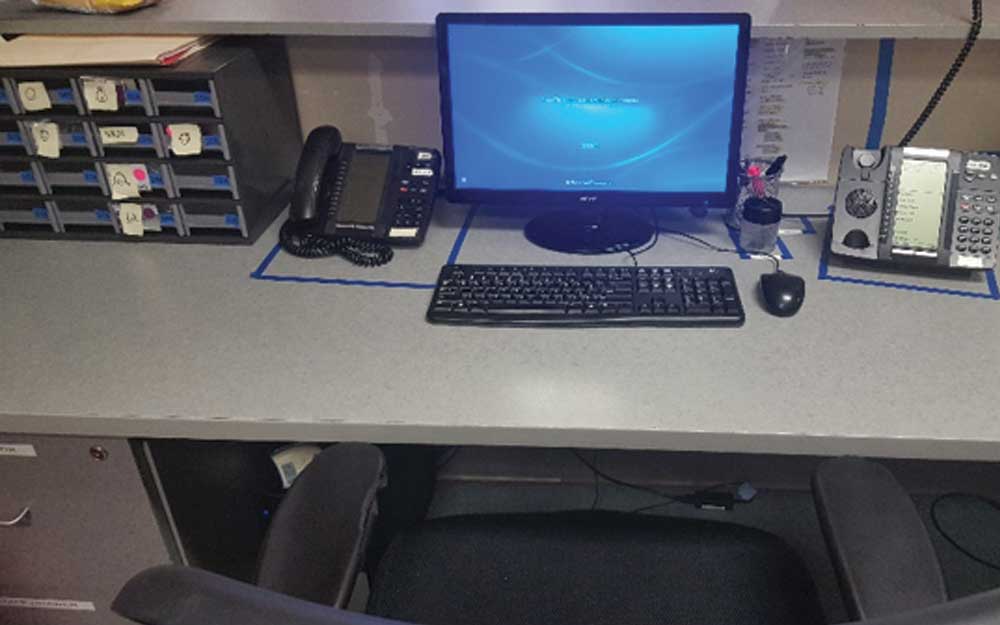 |
| West Allis nurses' station before | West Allis nurses' station after |
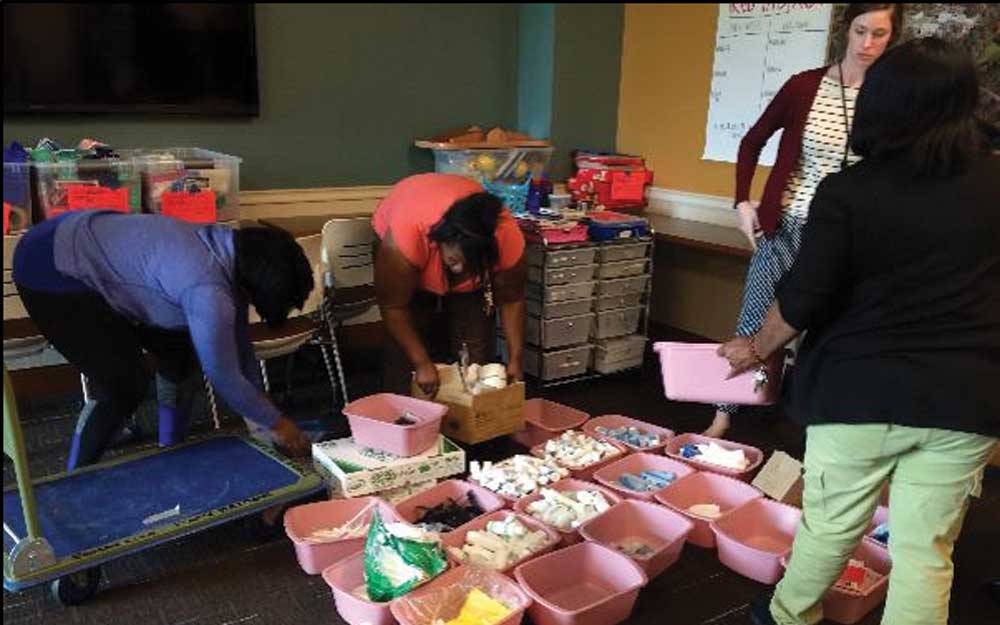 |
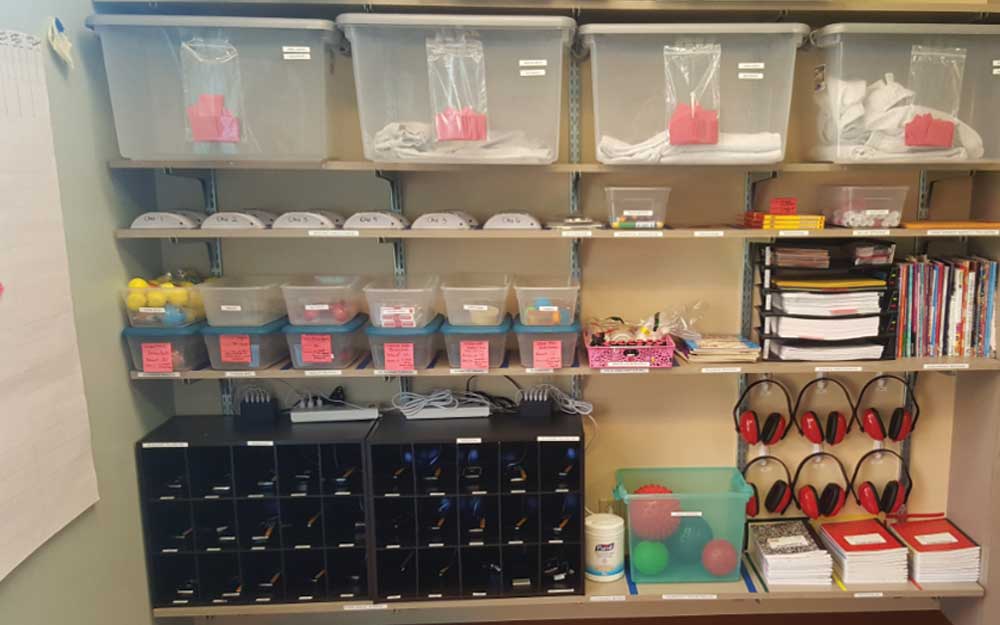 |
| Brown Deer sorting | Brown Deer comfort wall |
“These can be stressful units, and when I think of how much stress is eliminated with a well-organized, orderly environment, I know this will have a positive impact on patients. That’s what it’s all about,” shares Elizabeth Gilbert, administrator at Rogers-West Allis.
Kent reminds us, “Remember: Problems are gold. No problems mean no improvement.”
Helping patients transition to the right care
Another team focused on creating descriptions of Rogers 111 programs to be accessible in the Cerner medical record. The documents will have program information with clinical outcomes, locations and hours, and information patients need to know to start the program.
It’s part of an effort to educate patients about the value of enrolling in Partial Hospital and Intensive Outpatient Programs after inpatient stays, since evidence shows their outcomes are best when they step down to day treatment. The descriptions will also help the Social Services team have accurate information about all our programs at their fingertips.
“We have received wonderful feedback from the treatment teams where we have trialed these program information forms. Patients and staff have commented on how helpful they are to them. This information is critical for staff to know and understand all the programs available to our patients and for patients to feel they are well informed as they transition to another program within the Rogers system,” shares Kim Effertz, vice president and executive sponsor of the Rogers Improvement System Admissions and Transitions Value Stream.
